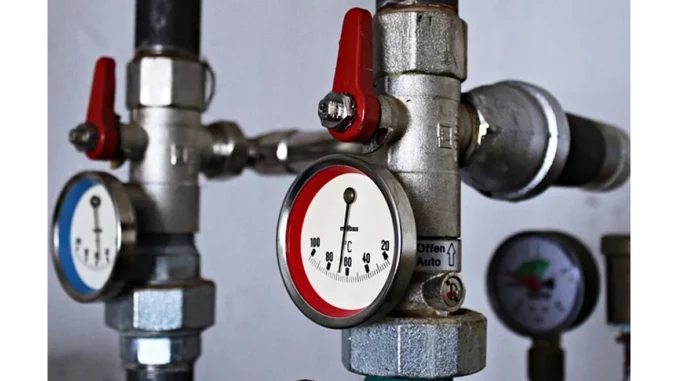
As the world contends with soaring energy costs and the pressing need to reduce carbon emissions, homeowners are progressively exploring alternative heating solutions. Traditional gas central heating systems, once the cornerstone of home heating, are now under scrutiny for their environmental footprint and escalating costs. In response, a range of innovative and eco-friendly heating alternatives is gaining momentum. This article will delve into the reasons behind the rising popularity of these alternatives, examining both their immediate benefits and long-term implications.
Successful low-energy building design hinges on careful planning. Focus360 Energy can help.
One of the primary drivers for the shift towards alternative heating methods is the financial incentive. With energy prices on a steep incline, operating gas central heating systems is becoming increasingly prohibitive. Recent forecasts indicate a further rise in energy prices in 2023, underscoring the necessity for homeowners to seek cost-effective heating solutions. Before even contemplating a new heating system, it is paramount to address fundamental aspects such as insulation and draught prevention. A significant proportion of heat in homes is lost due to poorly insulated roofs, walls, and floors. A well-insulated home can slash heating costs by up to 25%. Simple yet effective measures such as adding loft insulation, sealing draughts around windows and doors, and employing thermal curtains can substantially reduce heating expenses. These low-cost interventions serve as an excellent starting point for anyone aiming to lower their heating bills.
Bioethanol fireplaces have emerged as a popular choice for supplemental heating. Utilising bioethanol fuel, these fireplaces emit minimal CO2, comparable to that of a household candle. Unlike traditional fireplaces, bioethanol fireplaces do not necessitate a chimney or flue, making them easier and more economical to install. They are particularly suited for heating individual rooms rather than the entire house, offering a flexible and eco-friendly heating solution. Similarly, underfloor heating is another alternative gaining traction. Despite the high initial installation cost, the long-term benefits are considerable. Underfloor heating systems distribute heat more evenly across a room, providing superior temperature control and diminishing the need for frequent heating. This can lead to a reduction in energy bills by up to 15% annually. Furthermore, underfloor heating systems are compatible with renewable energy sources, rendering them a sustainable choice.
Smart thermostats are revolutionising home heating management. These devices learn household patterns and adjust heating schedules accordingly. They can be controlled remotely via smartphone apps, offering greater flexibility and efficiency. Manufacturers claim that smart thermostats can save homeowners between 8% and 16% on their annual heating bills. This technology not only yields financial savings but also contributes to reducing carbon footprints. Renewable energy sources also present viable alternatives to traditional heating systems. Solar panels, for instance, convert sunlight into energy, which can then be used to heat homes. Although the installation cost can be substantial, government incentives such as the Green Deal can mitigate these expenses. Solar panels typically provide around 50% of a household’s hot water needs, making them a viable supplementary heating source.
Heat pumps represent another renewable energy solution gaining popularity. These systems absorb natural heat from the air or ground and convert it into usable heat for homes. Heat pumps are highly efficient, producing three times more heat than traditional heaters for the same amount of electricity. Although the upfront cost can be high, government schemes are available to assist with installation costs. Over time, the energy savings can offset the initial investment, making heat pumps a cost-effective and sustainable option. Biomass boilers, using wood pellets to produce heat, offer a carbon-neutral alternative to gas and oil boilers. Eligible for government funding through schemes like the Boiler Upgrade Scheme, biomass boilers do require a vent and ample space for the boiler and fuel storage, making them more suitable for larger homes.
Infrared heating panels are a relatively new technology gaining traction. Unlike traditional heating systems that heat the air in a room, infrared panels heat objects and people directly. This method is incredibly efficient, as no energy is wasted heating the air. Infrared panels are also easy to install and can reduce energy bills by up to a third. They present an excellent option for those seeking a quick and affordable switch to a more efficient heating system.
The UK government has set ambitious targets to reduce greenhouse gas emissions significantly within the next 20 years. To achieve this, they are encouraging homeowners to transition to more sustainable heating options through various incentive schemes. These include grants for insulation, boiler upgrades, and renewable energy installations. By leveraging these schemes, homeowners can not only reduce their energy bills but also contribute to a more sustainable future.
The increasing popularity of alternative home heating solutions is driven by a confluence of financial, environmental, and technological factors. As energy prices continue to rise and the need to reduce carbon emissions becomes more urgent, homeowners are increasingly turning to innovative and sustainable heating options. From basic measures like improving insulation to investing in advanced technologies such as heat pumps and smart thermostats, there are myriad ways to enhance energy efficiency and environmental friendliness in homes. Now is the opportune moment to explore these alternatives and make a positive impact on both finances and the planet.


Be the first to comment